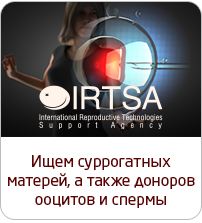Image processing technology can impact the success rates of ivf
 According to the researchers from Monash University, they have developed a new non-invasive image processing technique to visualise the mammalian embryo formation. They were able to see the movement of every cell in the embryo as they develop under the microscope. This could be a major breakthrough for Pre-implantation Genetic Diagnosis (PGD) and has important implications for In vitro Fertilization (IVF) treatments. This technique could improve the success rates of IVF by helping in selecting the right embryo to be implanted back into the uterus.
According to the researchers from Monash University, they have developed a new non-invasive image processing technique to visualise the mammalian embryo formation. They were able to see the movement of every cell in the embryo as they develop under the microscope. This could be a major breakthrough for Pre-implantation Genetic Diagnosis (PGD) and has important implications for In vitro Fertilization (IVF) treatments. This technique could improve the success rates of IVF by helping in selecting the right embryo to be implanted back into the uterus.
It is note that the embryos of mammals starts forming from a small group of identical cells. At an early stage, some of these cells take up the internal position in the embryo and later form the different cells in the body. The outer cells present, go on to form tissues like the placenta.
For years researchers hypothesised that the internal cells adopt their position in the embryo through a special process of cell division but there was no evidence to prove it, due to technological limitations. The model of the embryo formation was proved incorrect by the researchers at the Monash University through the newly developed image processing technique.
The image processing technology consists of a non-invasive custom image segmentation technique to see how human embryos used in IVF or Pre-implantation Genetic Diagnosis (PGD) first organise their cells. A laser technique, previously used for plants and fly embryo was applied to the mammalian embryo to determine the forces that were acting on the cells to take up the internal position in the embryo.
The technique of imaging thus showed how the cells moved, changed shape and were pushed into the embryo to make up the internal mass. The results further showed that the difference in tensions between the cells was the deciding factor for the cells to move in or to remain outside. Lasers or genetic manipulations were used to alter the tensions of the cells and researchers could change which cells move inside the embryo. These findings offer future potential to make alterations to improve inter-cellular forces and cell formation.
Research article was published in the Developmental cell journal and provides new insights into the embryo formation and the challenges that exist in the current model of the placement of cell via division.
“Our findings offer an attractive possibility where alterations to the inter cellular forces could increase the embryo viability leading to IVF outcomes. We can think of this as a push in the right direction,” researchers explain.
Based on: biotechin.asia
- The central office of IRTSA Ukraine completely restores work
- How we work during the COVID-19 pandemic
- 1st International Congress on Reproductive Law
- Soon Americans may face a new ethical dilemma
- ‘Friends’ star Jennifer Aniston is pregnant with twins
- Editing genes of human embryos can became the next big thing in genetics
- Supermodel Tyra Banks undergoes IVF
- Scientists discovered a new, safer way for egg freezing
- French scientists have managed to grow human sperm cells in vitro
- Cameron Diaz is reportedly pregnant with twins









